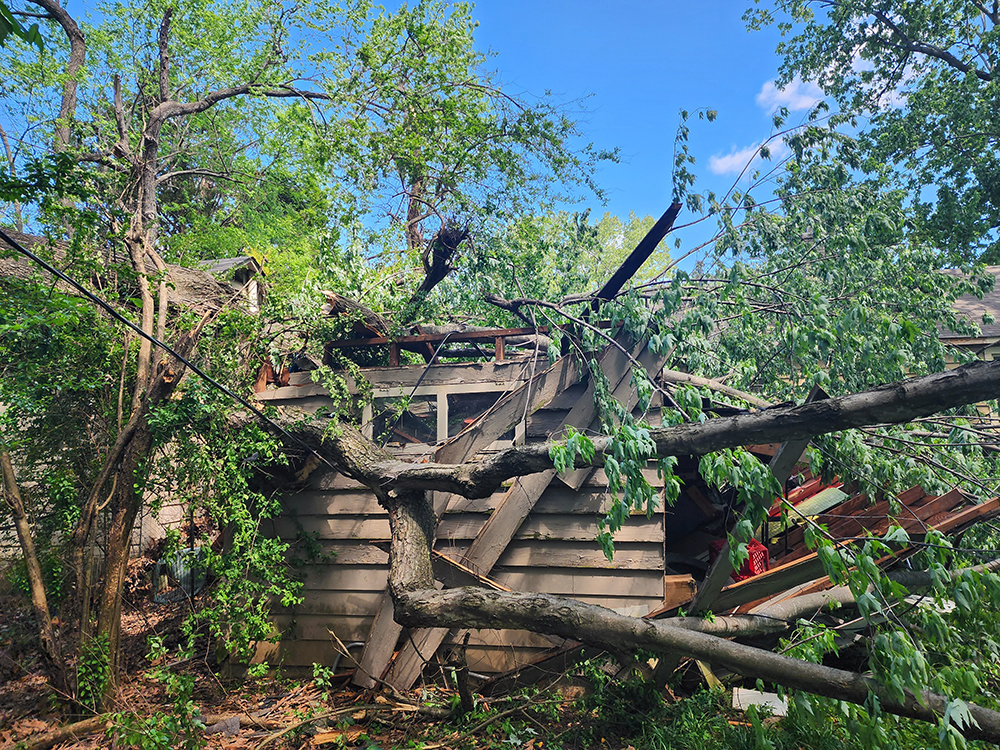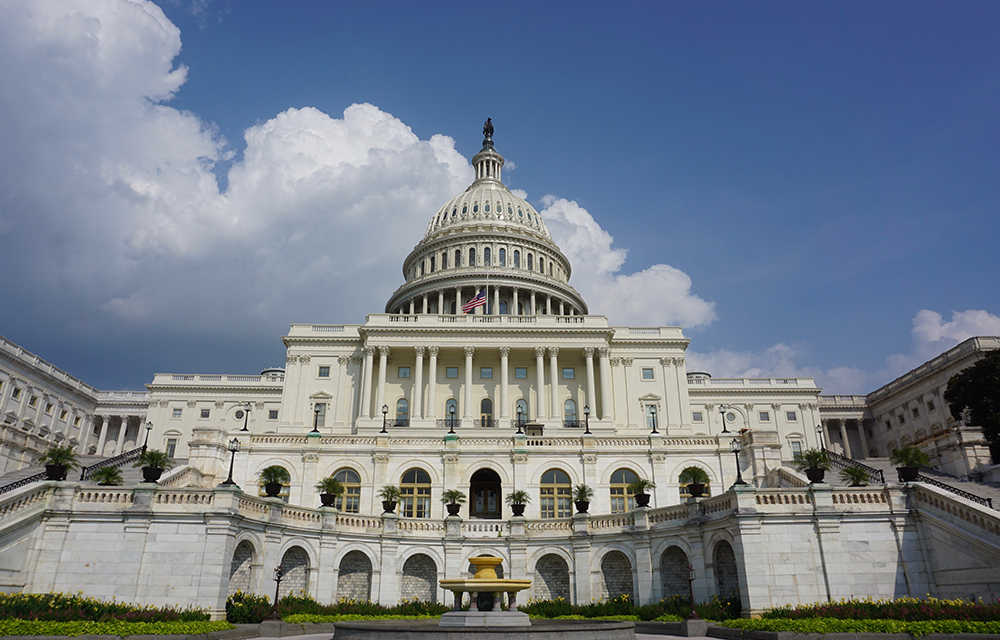Uncertainty over President-elect Donald Trump’s plans for federal tax credits and loan programs supporting American electric vehicle manufacturing could stall Tennessee’s fast-growing electric vehicle and clean energy industries, analysts say.
Tennessee has seen an estimated $12.6 billion in investments in new clean energy projects since the passage of the Inflation Reduction Act under President Joe Biden in 2022, according to an October Washington Post analysis of data from the Massachusetts Institute of Technology and energy think tank Rhodium Group.
The Inflation Reduction Act (IRA) created more than 20 tax incentives for clean energy and manufacturing, marking one of the largest climate investments in American history. No Republican lawmakers voted for the act, but the Post’s analysis found “red” states – including Tennessee – have so far received the lion’s share of investment dollars following its passage.
Low-cost federal loans and tax credits for U.S.-produced batteries and battery components have helped companies stand up more cost-competitive electric vehicle plants in the United States, said Harrison Godfrey, managing director of clean energy industry association Advanced Energy United. The IRA also changed consumer electric vehicle tax credits to incentivize the industry to anchor in the United States; For the credit to apply, vehicles must have batteries made in the U.S. using materials sourced from the U.S. or some allied nations, Godfrey said.
But Trump’s transition team is reportedly planning to scrap the $7,500 tax credit for buyers who purchase new electric vehicles, Reuters reported Friday. And the fate of Biden-era clean energy programs remains unclear.
This is not a red state, blue state economic development story. This is an all of America economic development and manufacturing resurgence story, and Tennessee is a great example of how this resurgence, this growth, is serving ‘red’ America.
– Harrison Godfrey, Advanced Energy United
Energy industry analysts worry such a rollback would stymie the balance of producer and consumer-facing incentives.
“The fundamental thing to understand about that is that the two work in conjunction,” Godfrey said. “It’s not enough just to have one side of that policy … it’s great if we’re standing up factories, but if there’s nobody buying at the end of the assembly line for those components, for that finished vehicle, because we haven’t also helped support that consumption side of the equation … we see great investments that do not actually bear fruit.”
Dozens of bills seeking to rescind parts of the IRA have been considered in the House of Representatives in the last two years, but 18 members of the House Republican Conference wrote in favor of maintaining the IRA’s energy tax credits in an August letter to House Speaker Mike Johnson.
“Prematurely repealing energy tax credits, particularly those which were used to justify investments that already broke ground, would undermine private investments and stop development that is already ongoing,” the letter states. “A full repeal would create a worst-case scenario where we would have spent billions of taxpayer dollars and received next to nothing in return.”
Jack Conness, a policy analyst at energy and climate think tank Energy Innovation, points to the letter as an example of the difference between rhetoric and reality in discussions about repealing parts of the IRA. The reality, he said, is that post-IRA investments have had “significant impact on economic growth and jobs” in red Congressional districts.
“Businesses have been operating under the assumption and making large investments in places like Western Tennessee on the assumption that this policy survives,” Conness said. “So when you want to potentially shake this up, it causes total chaos and havoc on the private business side.”
Electric vehicle and battery industries flock to Tennessee
These policies helped boost projects like Ford’s BlueOval City and the BlueOval SK battery plant in West Tennessee. The companies announced the plant’s development in Haywood County 2021. The U.S. Department of Energy approved a conditional loan of up to $9.2 billion to BlueOval SK under the IRA to build three battery plants in Tennessee and Kentucky last summer.
Godfrey said the future of the Loan Programs Office and its low-cost loan programs for EV and EV component manufacturers is a “big outstanding question.”
What to know: The new Ford BlueOval City plant poised to reshape West Tennessee
“If you deconstruct that, if you shutter the office or if you greatly reduce the size, shift that mission, I think there’s risk there that we don’t see additional projects like this funded in the future,” he said.
But while some factories have secured their IRA loans, the ink isn’t yet dry on loans like BlueOval SK’s, which is still in the conditional phase.
U.S. Rep. David Kustoff’s West Tennessee district has seen $7.9 billion in investment since the IRA’s passage, according to the Post analysis, followed by U.S. Rep. Andy Ogles’ Middle Tennessee with $2.9 billion.
Both voted against the IRA. Neither could be immediately reached for comment.
Kustoff said in 2022 that the “radical spending bill” would “hurt energy producers” and “certainly worsen inflation,” among other things. Ogles called it a “gross waste of taxpayer dollars.”
Both have said BlueOval City and BlueOval SK will be transformational for the region.
Since 2022, EV component supplier Magna announced it would build the first two supplier facilities in BlueOval City’s Stanton supplier park, and a stamping and assembly facility in Lawrenceburg. NOVONIX Anode Materials announced a new $1 billion battery plant in Chattanooga. Ultium Cells announced a $275 million expansion of its plant in Spring Hill.
According to the Post’s analysis, post-IRA investments have spanned multiple Congressional districts in Tennessee:
Diana Harshbarger (R), District 1: $17 million
Charles Fleischmann (R), District 3: $746 million
Scott DesJarlais (R), District 4: $146 million
Mark Green (R), District 7: $672 million
Steve Cohen (D), District 9: $189 million
“This is not a red state, blue state economic development story,” Godfrey said. “This is an all of America economic development and manufacturing resurgence story, and Tennessee is a great example of how this resurgence, this growth, is serving ‘red’ America.”
Industry Turbulence
The EV industry’s expansion in Tennessee — and the United States — has not been without setbacks.
Ford announced it would push back production of its new, all-electric pickup truck from 2025 to 2027 as part of its response to heightened competition in the EV market and slowing demand. But BlueOval SK is expected to begin producing battery cells in late 2025.
Nissan announced it will cut 9,000 jobs and 20% of its global manufacturing capacity in November after a drop in profit. It’s not clear if the Nissan Smyrna Vehicle Assembly Plant will be impacted.
Production at Ford’s West Tenn. plant delayed to 2027 in attempt to improve profitability
General Motors announced it will lay off 1,000 employees — mostly from its global technical center in Warren, Michigan — on Nov. 15. The company’s largest facility in North America is in Spring Hill.
Godfrey said all industries see “waxes and wanes” during growth, and the EV industry has been under a microscope in recent years. Progress doesn’t tend to be illustrated quarterly, but over years or decades, he said.
Conness said flirting with the idea of a repeal of IRA programs causes uncertainty to flare.
“The private market wants to know what’s happening on the policy side, and the private market has been pretty outspoken about keeping IRA,” he said.
Tesla Motors CEO Elon Musk, who has become a close associate of Trump, has spoken in favor of stripping the tax credit.
Musk wrote, “Take away the subsidies. It will only help Tesla. Also, remove subsidies from all industries!” on his social media site X in July. In a Tesla earnings call that month, he mused that ending the tax credits would be “devastating” for Tesla competitors but “long-term probably actually helps Tesla.” (Tesla has reaped some benefits from federal loan programs, tax credits and carbon credits).
The Alliance for Automotive Innovation — which represents 42 U.S. automotive companies including GM, Ford, Nissan and Volkswagen — penned a letter to Republican lawmakers in October asserting that the IRA’s EV tax credits are “critical to cementing the U.S. as a global leader in the future of automotive technology and manufacturing.”
“We think about the recent decades where we’ve seen much of the heartland of America, and particularly some of the industrial cities that were really prosperous and vital in the 20th Century collapse on themselves. It’s about the shrinking and departure of these anchor tenants … the major manufacturers there,” Godfrey said. “So the real risk is … if we see a pullback on the industrial policy that is helping support that resurgence, I think we could see a replay of what we’ve seen in a lot of these towns over the past 40-plus years, admittedly for slightly different reasons.”
Tennessee Lookout is part of States Newsroom, a nonprofit news network supported by grants and a coalition of donors as a 501c(3) public charity. Tennessee Lookout maintains editorial independence. Contact Editor Holly McCall for questions: info@tennesseelookout.com. Follow Tennessee Lookout on Facebook and X.


